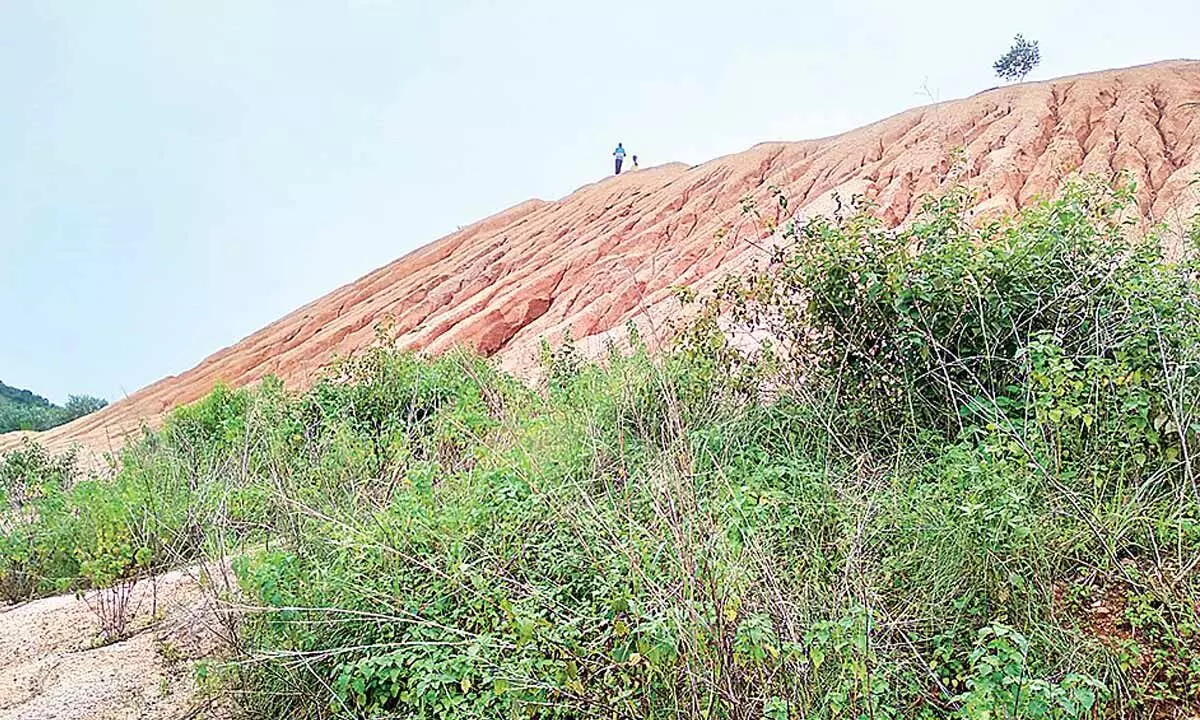APPCB public hearing on quartzite mining in Anakapalli deplored
HRF demands to cancel the public hearing as well as to withdraw permissions accorded to mining of quartzite
image for illustrative purpose

Visakhapatnam: AP Pollution Control Board is gearing up to hold environmental public hearing on mining of quartzite at Dalivalasa and Gavarapalem villages in K Kotapadu mandal of Anakapalli district on August 18 even as Human Rights Forum and a section of people in the vicinity have strongly opposed the move.
There is growing demand to cancel the public hearing as well as to withdraw permissions accorded to mining of quartzite. It is alleged that some powerful people who are involved behind illegal mining are conspiring to continue their activity by obtaining licences.
HRF has said all permissions accorded for mining quartzite to the two projects after a two-member team from the organisation went on a fact-finding mission. The team spoke to the local residents, most of them farmers and sheep-rearers, and looked at the effects of quartzite mining there for many years.
For about 18 years, the hills abutting the villages of Dalivalasa, Marrivalasa, Pindrangi and Gavarapalem were ravaged because of mining for quartzite by the same project proponents who now want to mine for another 20 years.
Shockingly, the mining was done without the mandatory environmental clearance, a fact admitted by the proponents. This was in flagrant violation of the Environment (Protection) Act. The matter went to court which penalised them a sum of Rs 10,000 each for this illegality.
K Sudha, State General Secretary and VS Krishna, AP & TS Coordination Committee member of HRF said that evidently, the effects of mining has devastated the environment and affected the livelihood and health of local residents.
"It was clear to us that mining had already compromised water security in the area. Several streams originating and flowing by the mine site were damaged because of the hills being destroyed. These streams flowdown and feed numerous tanks that sustain agriculture in the area," they stated.
The region is home to a vibrant farming and dairy community. Abutting the mine area is over 60 acres of land assigned decades ago to dalits and other marginalised communities who raise cashew and mango. Because of the nature of quartzite mining, their agricultural fields have suffered over the years due to water flows being undermined, immense dust dispersing over a wide area and indiscriminate dumping of huge amounts of waste material.
"When it rains, debris from the mines would gush into their habitation, local residents told us. During the intermittent blasting, stones would also descend on their area," they said. The hills where mining was done are also the lifeline for a large number of cattle and this has already been negatively impacted. If mining continues, there is a clear danger of cattle being substantially deprived of this precious grazing resource, Sudha and Krishna pointed out.
According to local residents, there was also a decline in milk yield and dairy has been hit because of pollution from mining and land degradation. The Raiwada canal is a mere 440 metres from the Gavarapalem mine.
In fact, the mining is in plain violation of the Supreme Court order of December 12, 2003 in Civil Appeals No 1907-1914 of 2000 which states that mining cannot be permitted within 2 km from any habitation.
The AP Pollution Control Board guidelines state that the distance between the boundary of a mining site and human habitation, educational institutions and religious places should not be less than 500 meters. The distance between the quartzite mine and Gollapeta, a hamlet of Gavarapalem with over 40 households, is a mere 260 metres, the HRF activists say.

